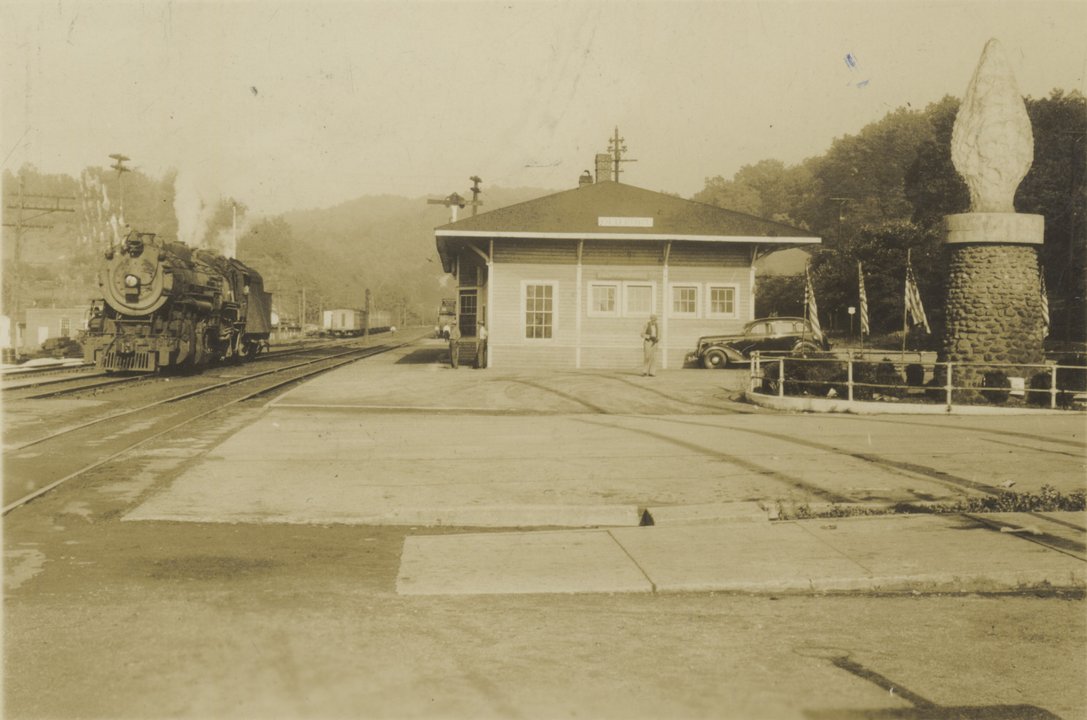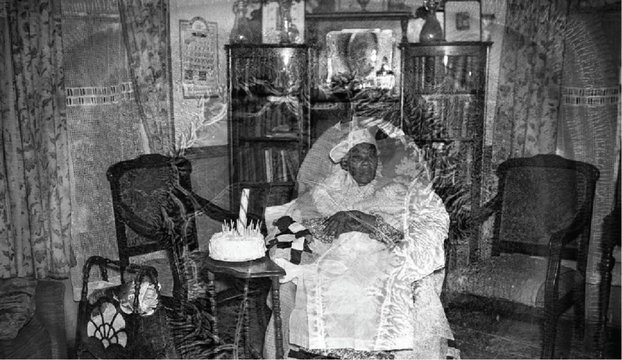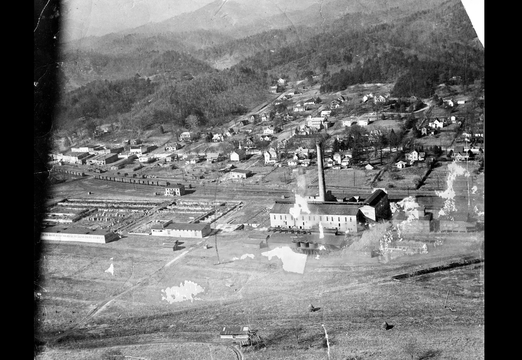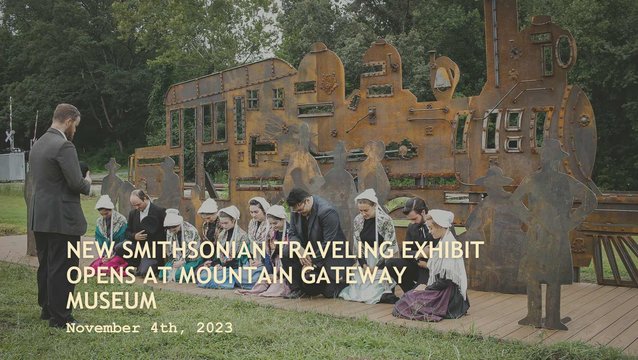Did you know eight passenger trains a day once ran through Old Fort? And that, back in the late 1700s, three former Indian trails intersected here?
If you’re old enough, you might recall soda-swilling “Sally the Bear” who lived at Point Lookout in a cage complete with a swimming pool. Or you may remember how one man’s effort to desegregate Old Fort School in the mid-1950s was noted in the nationally circulated Look magazine.
Even if you’re too young to have these memories, you’re likely to enjoy the second phase of the Mountain Gateway Museum’s photography exhibit, “A Peek Into the Past: Old Fort at 150.”
Opening on Tuesday, August 1, 2023, part two of this free exhibit continues to celebrate the Town of Old Fort’s sesquicentennial with images that feature some of the town’s outstanding people, places, events, and institutions from the past century and a half.
The images are digitized photographs pulled from both public and personal collections, including those of Bill Nichols, Kim Clark, Dee Daughtridge, Shearon Cline, the Col. Daniel W. Adams family, the Peggy Silvers family, the McDowell County Public Library, the Historic Carson House, the Town of Old Fort, the Western Regional Archives at Oteen, and others. The exhibit also includes more than two dozen artifacts on loan from local residents and businesses.
As a bonus, some of the exhibit labels contain QR codes. When scanned with a smart phone, the codes reveal excerpts from recorded interviews with McDowell County senior citizens, whose memories relate to the accompanying photograph. The interviews were done between 2011 and 2015 as part of the McDowell County Tourism Development Authority’s “McDowell County Legacy Project.” Retired WNCW 88.7 radio producer Kim Clark edited the interviews for this exhibition.
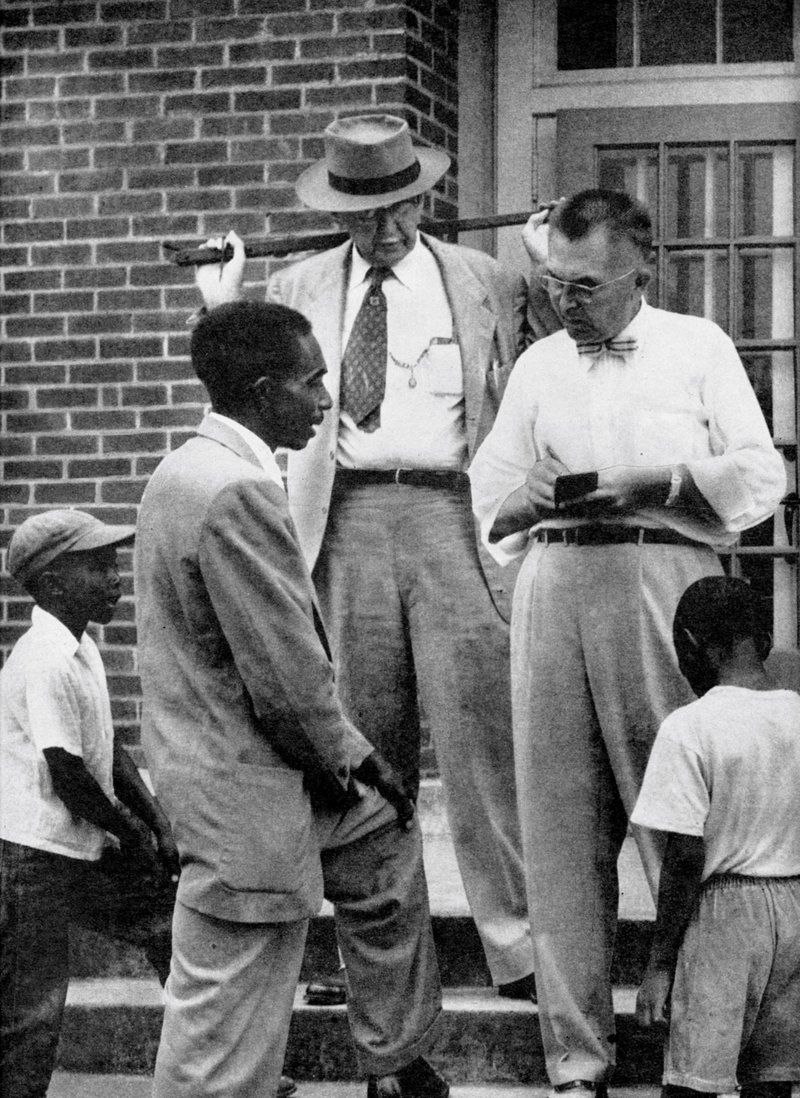
The Town of Old Fort, first incorporated as “Catawba Vale” on Jan. 25, 1872, was re-chartered as “Old Fort” by the North Carolina General Assembly on February 23, 1873. The name was inspired by the stockade that Samuel Davidson built alongside Mill Creek during the 1770s for early settlers’ protection from the Cherokee.
By the American Revolution, Gen. Griffith Rutherford’s soldiers had converted Davidson’s simple stockade into a militia fort. From there, Rutherford launched a “scorched-earth campaign” against Cherokee towns in western North Carolina in September 1776. The expedition’s purpose was twofold: to weaken the Cherokee before they could fully ally with British troops and to retaliate against the native people for their attacks on European settlers, who had been encroaching on Cherokee territory. The route of the expedition became known as the “Rutherford Trace.”
“A Peek Into the Past: Old Fort at 150” will remain open through Sunday, Feb. 18, 2024.
The Mountain Gateway Museum is open Tuesday through Saturday from 9 a.m. to 5 p.m. and on Sunday from 2 to 5 p.m. Admission is free.
For more information about the exhibit, please contact RoAnn Bishop at the Mountain Gateway Museum at 828-668-9259 or roann.bishop@ncdcr.gov or visit the museum’s website www.mgmnc.org.
